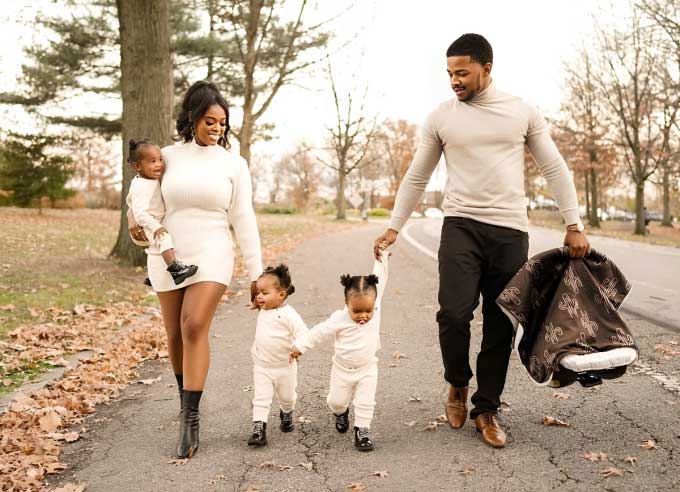Dee Michelle, 35 years old, discovered she was pregnant with twins while already expecting her first child, a phenomenon recorded just ten times in medical literature.
The woman reported that she became pregnant with her first child in July 2020. After some time, she experienced severe pain and thought she was having a miscarriage, prompting her to visit the emergency room. To her surprise, doctors diagnosed that her uterus was expanding too quickly due to the presence of two additional babies.
Michelle shared her story on her personal TikTok account, garnering 1.7 million views. She stated that she cried like a child upon receiving the news.
“I asked the doctors if they were joking. They were confident about this diagnosis. I was shocked to witness it myself,” she said.
Both she and her husband, Livingston, 29, were unaware that a woman could conceive while already pregnant.
According to doctors, this condition is known as superfetation, which occurs when another egg is fertilized and implanted in the uterus several days to weeks later than the first egg. Superfetation is more common in animal species, such as fish, rabbits, and badgers.
Typically, the reproductive cycle in women is straightforward: to become pregnant. Once pregnancy is achieved, the body stops ovulating and nourishes the embryo. This usually occurs within ten days of conception. These barriers are so effective that natural superfetation is extremely unlikely to happen.

Dee Michelle with her husband and their three daughters born in this rare birth case. (Photo: Deeandtplusthree)
Most cases of superfetation are related to assisted reproductive technology. The remarkable aspect of Michelle’s birth is that all three children were conceived through natural intercourse.
This medical phenomenon is extremely rare, with only ten documented cases in human history. In August 2020, Sophia Small gave birth to two daughters conceived 28 days apart.
In fact, superfetation pregnancy resembles twin or triplet pregnancies in certain aspects. Similar to twins or triplets, the embryos share the same uterus and develop simultaneously. However, the key difference is that the embryos do not form during the same menstrual cycle. Consequently, the children have different gestational ages, with the first fertilized embryo maturing before the second or third.
Michelle’s three daughters, Amber, Dream, and Amani, were born via cesarean section in January 2021. They are now two years old and have no health issues related to the pregnancy.



















































